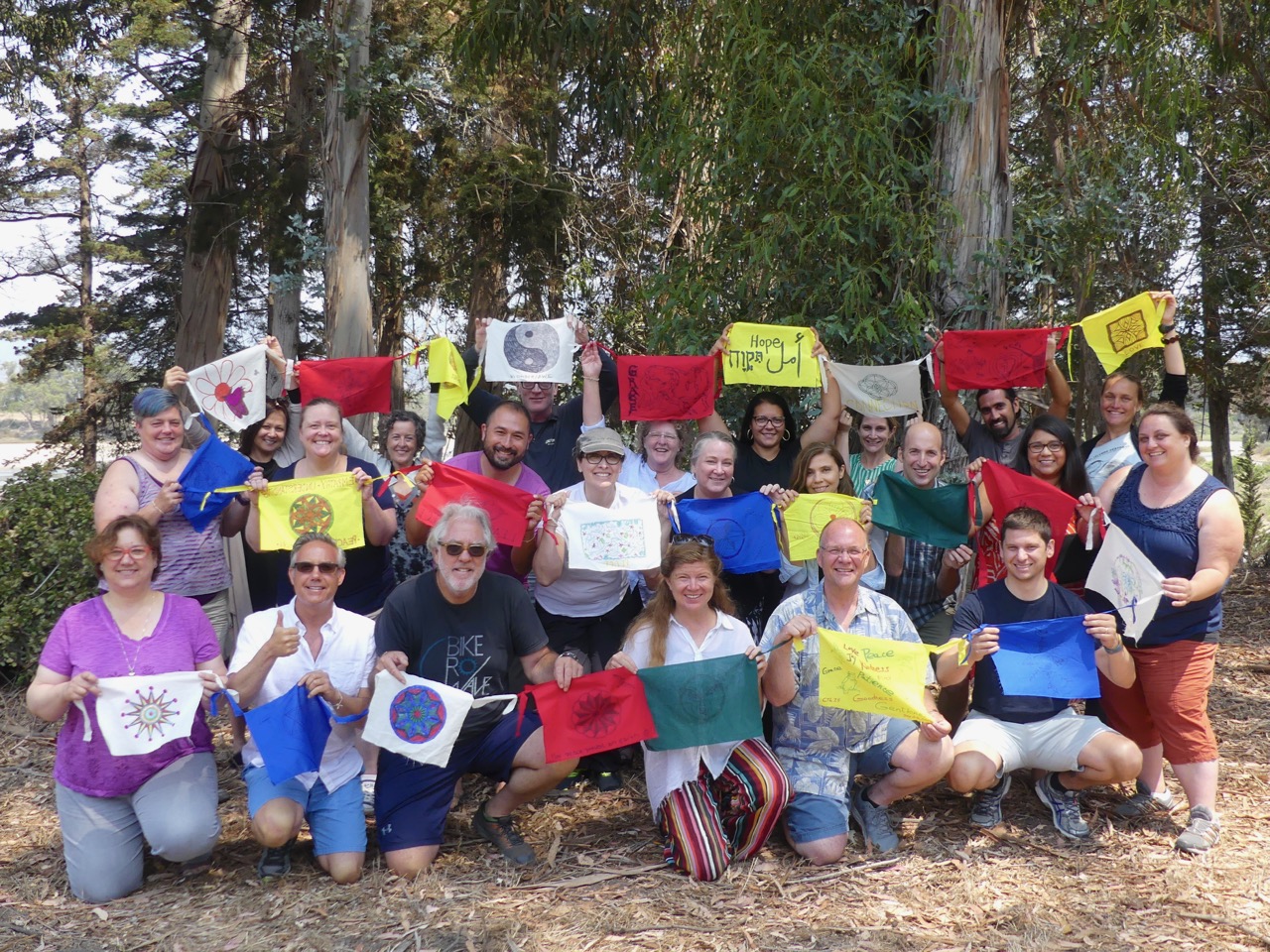Learning to Linger By Ken Saxon A few years ago, I had a revelation. Every…

A Conversation Between Two Alumni
August Iced Lattés with Terri and Judy
By Judy Hawkins
With over 30 years cultivating deep work in preschool teaching, families and healing, Terri Allison “retired” from Storyteller Children’s Center 3 years ago. Clearly, she has not retired from this vital work. She founded Moonlit Consulting, her current encore focus and continues to gift our community with her wisdom and profound relationship building (https://www.linkedin.com/in/terri-allison-048579a).
You’ll know you are in the presence of Terri (CTL Cohort 5) by her eyes – mirages of brilliant blue ocean. Her spirit is at once calm and captivating. Come, join our recent conversation over iced lattés…
Judy: How does Courage to Lead continue to show up in your life?
Terri: The community it creates! For me that’s been the most important thing: our CTL community…how being in this (CTL) community shifts our thinking. It’s like a healthy relational form of the Brown Act—where there is a crucial number, it’s a (official) meeting and it shifts the conversation.
Judy: What happens for you as part of the CTL community?
Terri: Part of it is trust, this immediate feeling of trust. And then I think a shared experience and shared language around it. That’s probably what shifts and what others “feel” around us – a holding of the space and the energy. And, I facilitate reflective practice groups –- the CTL touchstones are similar to that way.
Judy: Do any touchstones resonate more than others for you?
Terri: The one about Turn to Wonder. Listen with an open heart.
Judy: What draws you to your work? What makes you stay?
Terri: You may know that ACEs recently got a new life. The Adverse Childhood Experiences Study (ACEs) of 30 years ago is being newly integrated locally in Santa Barbara County. While Kids Network, Storyteller, CALM, SB Neighborhood Clinics and other family support services organizations have been ACES-aware, the recent LFW Impact Lab opportunity is focused on an intentional collaborative effort.
<<Hey, What’s ACEs? The ACEs study represents significant foundational research in the 1990’s that led to the identification of ACEs incidence. The CDC and Kaiser Permanente collaborated on a longitudinal study with over 17,000 patients in Southern California that revealed persons with four or more ACEs factors of childhood trauma (physical and/or psychological) were vastly more likely to experience physical health incidence in adulthood (chronic health conditions, risky health behaviors, addictions, and early death). Understanding the science of ACEs can help us respond with trauma informed interventions.
Judy: What’s your story of the LFW Impact Lab?
Terri: Local agencies and social service providers became interested in incorporating ACEs and trauma informed practices in their work. My friend and colleague Barbara Finch (CTL Cohort 5) was involved with several community initiatives (building on ACEs) as part of her work as Director of Santa Barbara County Department of Social Services/ Kids Network: a Resilience film screening, the Bridges to Resilience Conference, and The Resiliency Project with pediatricians Santa Barbara Neighborhood Clinics. Barb’s focus led to a partnership with UCSB Arts and Lectures to host Nadine Burk Harris (TEDMED 2014) presenting on the effects of childhood trauma across a lifetime – attended by over 1,000 people. The Courage to Lead connection began when we were encouraged to apply for the first LFW Impact Lab 1.0 project this Spring. Our work history around ACEs and our bond through the program and our leader circle made it easy for us to come together to draft the proposal and catalyze the effort to organize community partners and move it forward. So far we’ve had 2 of 3 facilitated meetings with the support of LFW and Carl Palmer (CTL Cohort 5). Stay tuned!
Judy: What do you know/notice is challenging our community in the current political and post-disaster climate?
Terri: In my work, there’s a lot more uncertainty in families – especially low-income and immigrant families. A lot more fear. This climate is stressing out people who already have experienced trauma.
After January (debris flow disaster), kids were returning to school with a lot of fear in having been away. A few weeks later, the stress the teachers had experienced ….after struggling for weeks to get to work, stand in for co-workers and commute with great difficulties…caught up with them. We call this secondary stress or vicarious trauma.
Judy: What do we do?
Terri: Actually, CTL practices and LFW programs can be a response to vicarious trauma – an access to healing and renewing ourselves.
Judy: My philanthropist friend Gus Whalen says, “What’s next? Hope is always next.” Terri, what have you been thinking about a lot lately? Where’s our next hope?
Terri: One of the things is, there are not enough therapists in the world to heal everyone’s brokenness. However, there are enough of (all of) us to heal one another.
Research is showing that the number of healthy relationships in our lives can be as effective in the building of resilience as (clinical) interventions. We can begin by asking, “What positive relationships do we have?” and how can we cultivate these and more. <Think circle of friends, caregiver, church community, family, neighbors etc.>
A big shift in Storyteller, was realizing with teachers that when we are in school earning our credentials, we (teachers) are taught to “manage” behavior. What if we just understood behavior? And that all behavior has meaning? Then instead of reacting, we respond to others from where they are. A big step is just acknowledging that we, people, are all traumatized.
What’s on my mind is this idea about creating communities. There’s been a lot of work around understanding brain development. Our brain is organized from the bottom up: reptile/reactive base to middle/processor to top/cortex thoughtful responder.
How do we get people in their cortex more? How do we get organizations (and boards) out of their reptilian, fear-based, reactive brain? We are asking systems to be thoughtful, but they are too worried, too scared, too overwhelmed. How do we get regulated through reflective practices, then co-regulate each other in community, and then create more thoughtful groups and organizations to do our work?
Judy: Now these, Terri, are powerful thoughts worth thinking more about. Thank you for your time, your bright mind and kind presence.
Are you intrigued by Terri’s work? Learn more:
- Resilience – movie trailer: https://vimeo.com/137282528
- Buddha’s Brain by Rick Hansen, PhD
- Impact Lab 1.0 project: SB County Department of Social Services (Barbara Finch), Moonlit Consulting (Terri Alison), LFW (Carl Palmer)
- TEDMED talk by Nadine Burk-Harris https://www.ted.com/talks/nadine_burke_harris_how_childhood_trauma_affects_health_across_a_lifetime



